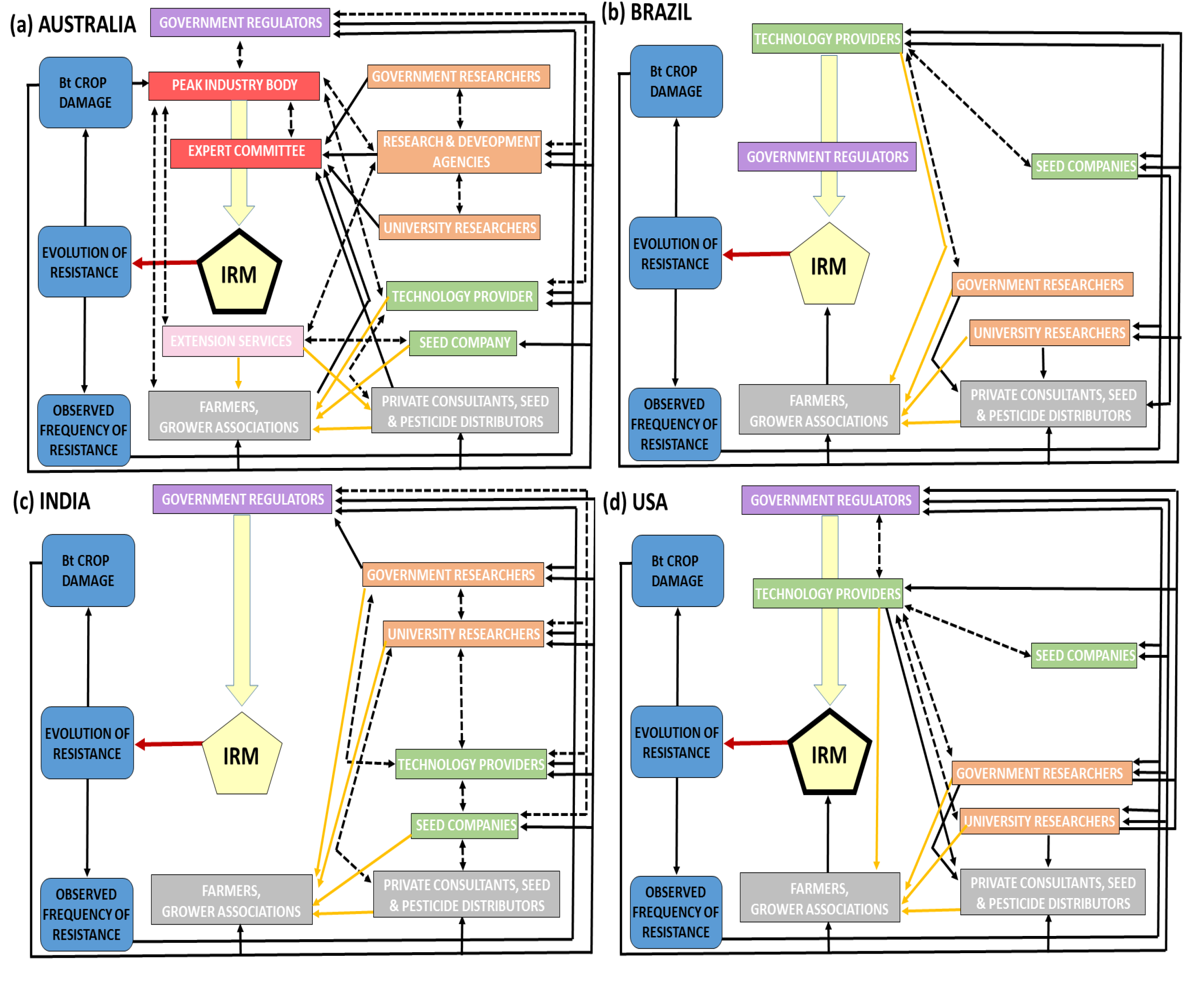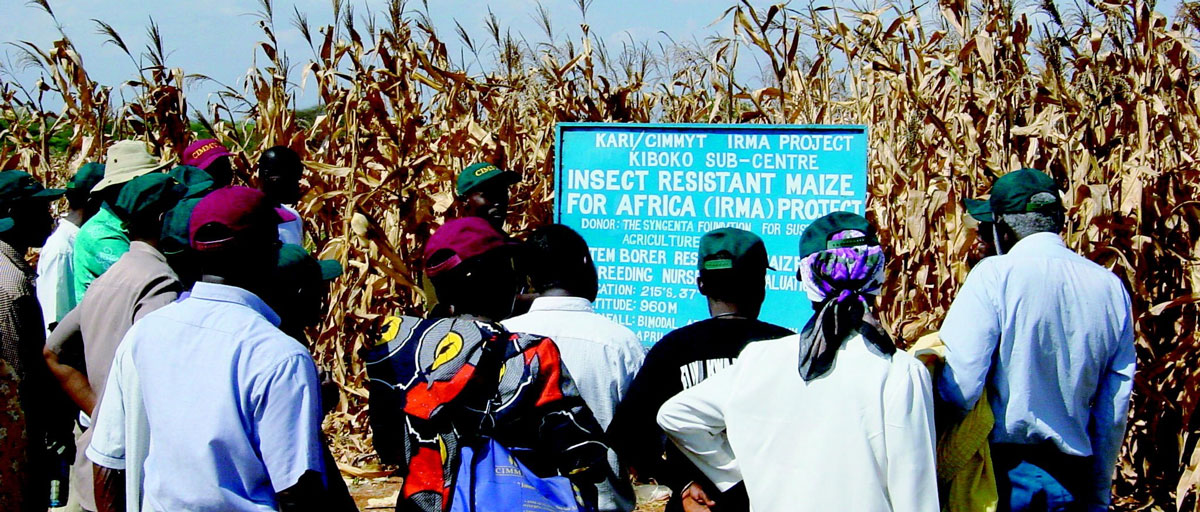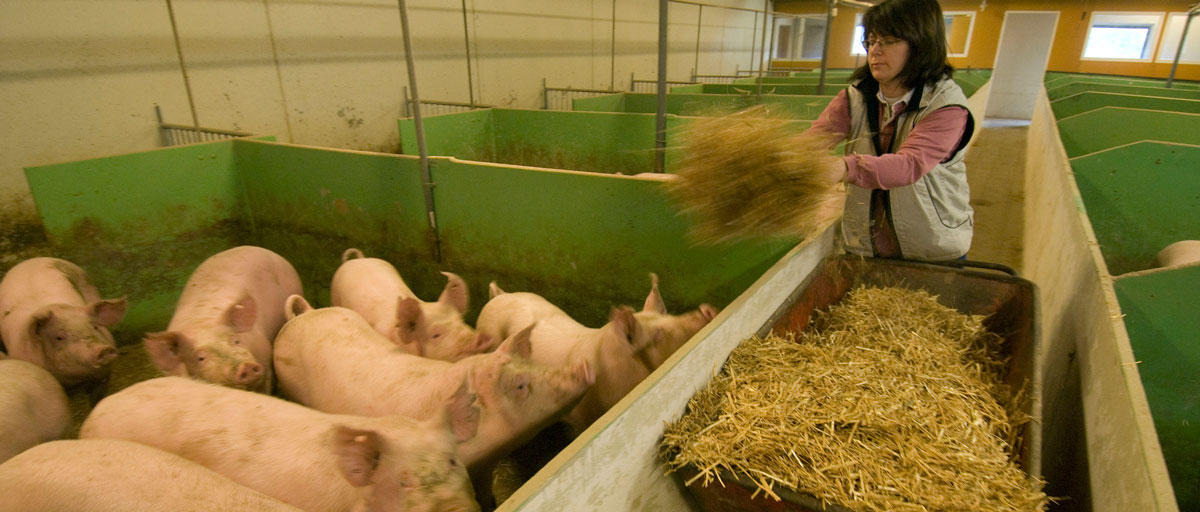Bildtext får vara max två rader text. Hela texten ska högerjusteras om den bara ska innehålla fotobyline! Photo: B. Christensen/Azote
PEST MANAGEMENT
Vive la resistance
Dealing with pest resistance is complex and context specific, but certain similarities on how to do it can be found across several countries
- Use of genetically engineered Bt crops is now widespread but several pests are becoming resistant
- Study analyses resistance management governance for Bt crops in Australia, Brazil, India and the US, to identify factors that can improve policies and strategies for resistance management
- Mandates for resistance management and awareness by government regulators
- and other stakeholders of the resistance risks associated with use of Bt crops are key factors for improving resistance management outcomes
Keeping pests and pathogens under control is fundamental for our ability to grow our food. Pesticides and antimicrobials can help but they can also leave farmers vulnerable if either fail to curb attacks on their crops. Over the last two decades a different option has transformed agriculture in several countries.
Genetically modified crops called Bt crops, after the common soil bacterium (Bacillus thuringiensis) that provided the genes incorporated in such crops, produce proteins that are toxic to insects but have little or no impact on other organisms. These crops have proved to be an efficient protection for farmers who produce crops like corn, cotton and soybeans. The use of Bt crops is now widespread, covering an area approximately the size of Ethiopia, but several pests are becoming resistant.
How to deal with this?
In a study recently published in the journal Ambio, centre researcher Peter Søgaard Jørgensen, along with colleagues from the US, Australia, India, Canada and Brazil, have analysed resistance management governance in Australia, Brazil, India and the US. Common to these countries is that Bt crops play an important role in agriculture. The objective of the study was to identify policies and strategies that can help sustain efficacy of Bt crops.
Ultimately, the study finds that a more joint effort and shared understanding among government regulators, technology providers and farmers can improve sustainability of Bt crops.
The role of farmers, companies, government offices
The prevalent strategy to manage Bt resistance in pests is the “refuge strategy”, in which non-Bt crops are planted to ‘distract’ some of the insects from going straight to the Bt crops. This also means that insects that survive on Bt crops have a higher chance of mating with individuals from the refuge that are not resistant to Bt toxins, which slows the evolution of resistance. But planting refuges may reduce yields, which diminishes incentives for farmers to use the refuge strategy.
“Individual growers directly bear the near-term economic costs of refuge adoption but only derive longer-term benefits of refuges through preservation of Bt effectiveness,” says co-author Peter Søgaard Jørgensen.
Then there is the role of technology providers that help preserve effectiveness of the Bt crops. This role varies across countries, where technology providers can be directly (e.g., US) or indirectly (e.g., Australia) responsible for enforcing resistance management mandates, or voluntarily coordinate efforts (e.g., Brazil) to improve grower implementation of resistance management strategies. Their incentives are shaped by property rights and market structure.
The role of government also varies across countries. Australia, India and the USA formally mandate use of resistance management measures and reporting of pest resistance, whereas in Brazil resistance management is voluntary.
In Australia, the implementation has been successful, largely thanks to a close collaboration between several stakeholders and direct linkages between the group that appraises resistance risks and farmers, which seems to have facilitated adoption of resistance management measures by farmers.
In the US, poor compliance has led to resistance problems despite sophisticated governance systems. India has also suffered from low compliance, largely because the overwhelming number of growers hinders sufficient monitoring.
Carrots and sticks
Solutions to many of the challenges facing each country could be provided by adoption of context-dependant “carrots and sticks” approaches, according to Jørgensen and his colleagues. Carrots include factors such as discounts for farmers to invest in refuge seed or extended patent lives to successful biotech companies. Sticks include factors such as restricted access to Bt seeds in cases of noncompliance with refuge mandates, or rejected re-registration of a Bt seed if a company does not comply with certain expectations.
With greater use of genetically modified crops in more parts of the world, developing robust resistance programmes for Bt crops is a priority, the authors write.
This means four things: farmer must be more sensitive to the risks associated with growing pest resistance, monitoring of both compliance and increase in pest resistance must get better, and actions to curb such resistance must happen quicker and more effectively.
All this requires a more collaborative management, the authors conclude.
Methodology
The authors used the Institutional Analysis and Development framework (IAD) to map the institutional and environmental settings of the Bt-crop systems among four of the largest growing countries, Australia, Brazil, India and the United States. The IAD framework identifies biophysical conditions, actors, and rules of a social-ecological system and analyzes how these factors interact in characteristic action situations to create a series of outcomes. The authors proceeded to identify linkages between participants in Bt crop governance in the four countries to understand how these might be realted to differences in outcomes (figure below). Finally, based on the understanding of the situation in the four countries, the authors identified positive and negative incentives that could help address identified priorities for improving Bt crop management.

Carrière, Y., Brown, Z.S., Downes, S.J. et al. 2019. Governing evolution: A socioecological comparison of resistance management for insecticidal transgenic Bt crops among four countries. Ambio (2019). https://doi.org/10.1007/s13280-019-01167-0
Peter Søgaard Jørgensen’s research focuses on measuring sustainable development in the Anthropocene and developing new approaches to deal with antibiotic resistance.










